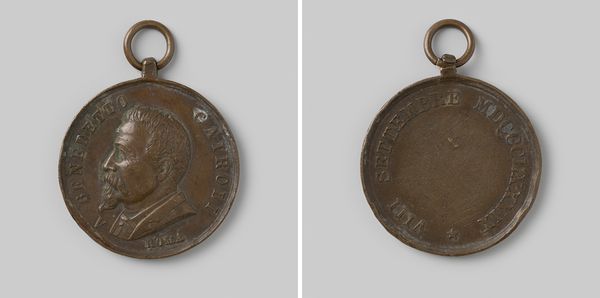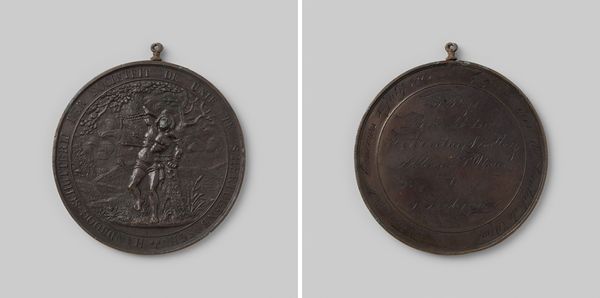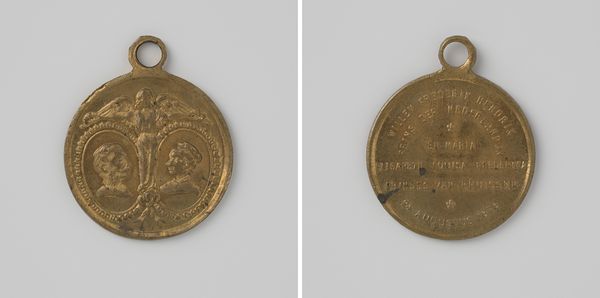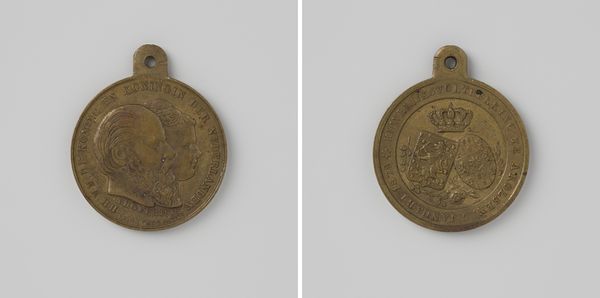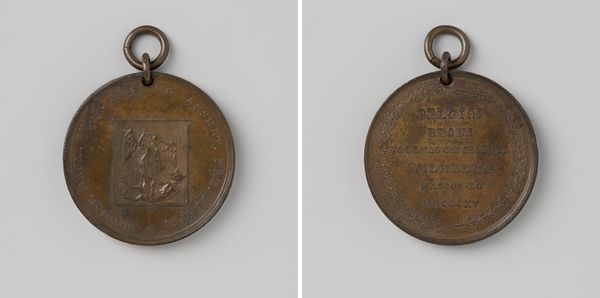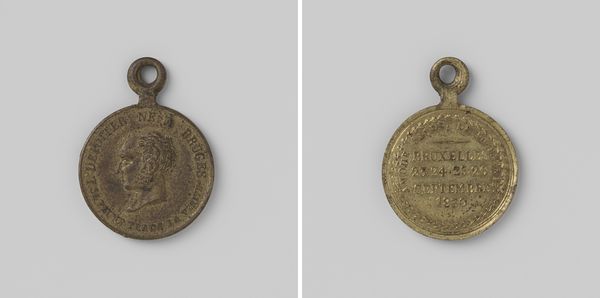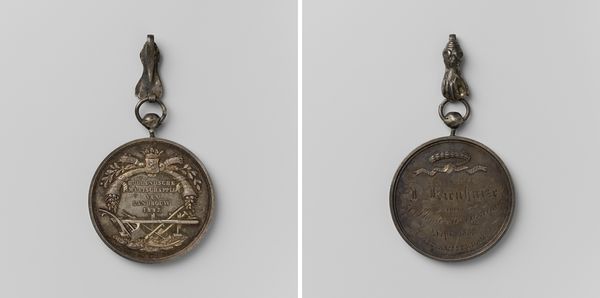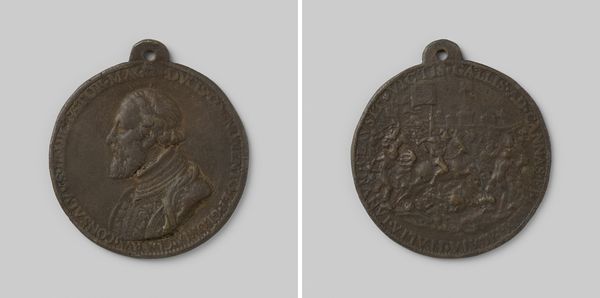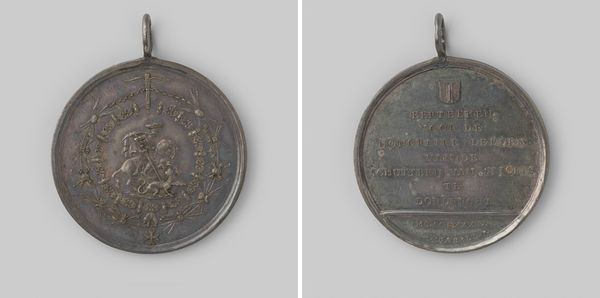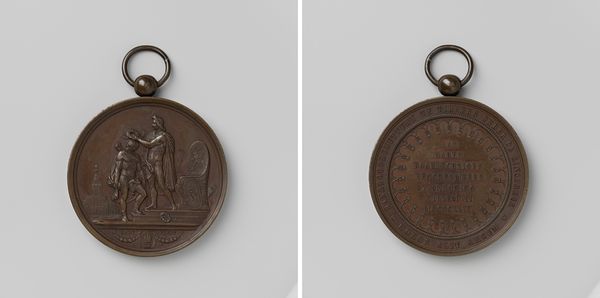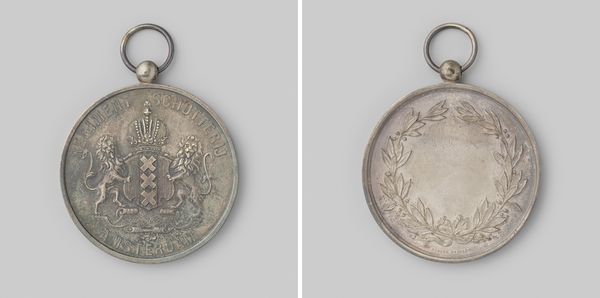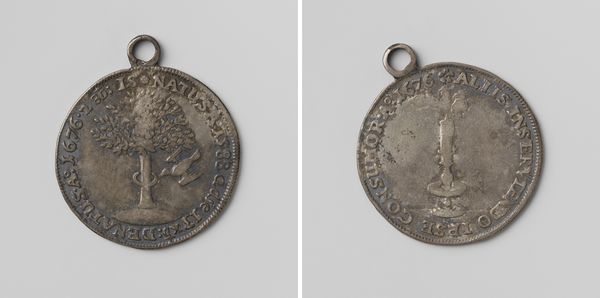
Prijspenning Stedelijke Schietwedstrijd Amsterdam, 1891-1892, individueel vuur, tweede prijs 1891 - 1892
0:00
0:00
print, metal, relief, bronze, sculpture
#
medieval
# print
#
metal
#
relief
#
bronze
#
sculpture
Copyright: Rijks Museum: Open Domain
Editor: This is a bronze medal, "Prijspenning Stedelijke Schietwedstrijd Amsterdam," dating back to 1891-1892, awarded for second place in individual firearm competition. It has this slightly medieval aesthetic to it, don't you think? I find the combination of weaponry and heraldry intriguing. How do you interpret this piece within its historical context? Curator: The medal’s "medieval" aesthetic is a deliberate choice. In the late 19th century, there was a widespread revival of interest in the medieval period. This "neo-medievalism" reflected a yearning for a seemingly simpler, more ordered past, a counterpoint to rapid industrialization. Municipal shooting competitions, like this one in Amsterdam, adopted visual languages to associate themselves with traditional values of citizenship, skill, and community. Notice the city's coat of arms – how does that relate to the public role of art, do you think? Editor: Well, the prominent display of Amsterdam’s coat of arms reinforces the civic pride and identity linked to the shooting competition, positioning it as a significant city event sanctioned by the municipality. So it makes me think about which stories and messages those institutions choose to publicly share. Curator: Precisely! The medal is a powerful piece of propaganda, reinforcing specific socio-political messages, like the celebration of skill, civic engagement, and traditional masculinity. Considering that medals were often displayed publicly, imagine the kind of national pride and spirit they could stoke. The historical importance and institutional significance is not always about great artistic merit, but about shaping societal values and power structures. Editor: It's interesting how such a small object can tell us so much about the values of that time and how those values were publicly promoted! I didn’t really see this before. Curator: And thinking about how public values are portrayed visually today might make for an even more insightful discussion.
Comments
No comments
Be the first to comment and join the conversation on the ultimate creative platform.
